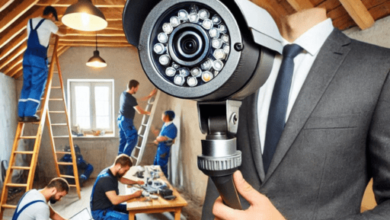
In Sarasota, ensuring your fridge operates at peak performance is essential. Whether you’re dealing with minor issues or significant malfunctions, this guide provides the detailed insights needed for effective Sarasota fridge repair and maintenance. As a leading authority in appliance repair, we aim to offer the most thorough and practical advice for Sarasota residents.
Understanding Common Fridge Problems
1. Temperature Fluctuations
One of the most common issues is inconsistent temperatures. This can lead to food spoilage and increased energy consumption. Possible causes include faulty thermostats, malfunctioning sensors, or blocked vents. Regularly checking these components can prevent significant problems.
2. Unusual Noises
Strange noises often indicate underlying issues. Potential sources of noise include the compressor, condenser fan, or evaporator fan. Identifying the exact source is crucial for effective repair. We recommend listening carefully and noting when and where the noise occurs.
3. Water Leaks
Water leaks inside or outside the fridge can be caused by clogged defrost drains, broken water supply lines, or malfunctioning water filters. Preventative maintenance includes regular cleaning of defrost drains and timely replacement of water filters.
Essential Maintenance Tips
1. Regular Cleaning
Keeping your fridge clean ensures it runs efficiently. Steps for cleaning include wiping down shelves and drawers, cleaning the condenser coils, and ensuring door seals are free from debris. Clean condenser coils allow for better heat exchange, improving efficiency.
2. Checking Door Seals
Faulty door seals can lead to energy loss and inefficient cooling. Inspect seals for cracks or wear and replace them if necessary. A simple test involves closing the door on a piece of paper. If you can pull the paper out easily, the seal needs replacement.
3. Optimal Temperature Settings
Maintaining the correct temperature is vital. Recommended settings are 37-40°F for the fridge and 0°F for the freezer. Regularly check these settings and adjust as needed to ensure optimal performance.
DIY Repair Tips
1. Replacing the Thermostat
A faulty thermostat can cause temperature issues. Steps for replacement include unplugging the fridge, locating the thermostat (usually behind the temperature control panel), disconnecting the wires, and installing the new thermostat. Ensure all connections are secure before plugging the fridge back in.
2. Unclogging the Defrost Drain
A clogged defrost drain can cause water leaks. To unclog, locate the drain hole (usually at the back of the fridge), use a pipe cleaner or warm water to clear the blockage, and ensure water flows freely.
3. Replacing the Water Filter
Regular replacement of the water filter is essential for clean water and ice. Steps include locating the filter (typically in the base grille or inside the fridge), turning it counterclockwise, removing it, and installing the new filter. Follow the manufacturer’s instructions for specific details.
When to Call a Professional
1. Persistent Issues
If problems persist despite your efforts, it may be time to call a professional. Signs include continued temperature fluctuations, persistent leaks, or recurring noise issues. Professional technicians have the tools and expertise to diagnose and fix complex problems.
2. Electrical Problems
Electrical issues can be dangerous. If you suspect an electrical problem, such as flickering lights or frequent power outages, seek professional help immediately. Attempting to fix electrical issues without proper knowledge can result in injury or further damage.
3. Major Component Failures
Components like the compressor or control board are crucial for fridge operation. Replacing these parts often requires specialized tools and expertise. If you suspect a major component failure, contact a professional for accurate diagnosis and repair.
Choosing the Right Repair Service
1. Research and Reviews
Before selecting a repair service, research and read reviews. Look for companies with positive feedback, transparent pricing, and certified technicians. Websites like Yelp and Google Reviews can provide valuable insights into customer experiences.
2. Certification and Experience
Choose a service with certified technicians. Certifications from organizations like the EPA and NATE indicate a high level of expertise. Experienced technicians are more likely to diagnose issues accurately and perform repairs efficiently.
3. Warranty and Guarantees
Ensure the repair service offers a warranty or guarantee on their work. This provides peace of mind and ensures you’re covered if problems arise after the repair. A reputable company will stand behind their work and offer a clear warranty policy.
Preventative Measures
1. Regular Inspections
Conduct regular inspections to catch potential issues early. Check for signs of wear and tear, unusual noises, or changes in performance. Early detection can prevent major problems and extend the lifespan of your fridge.
2. Scheduled Maintenance
Consider scheduling regular maintenance with a professional service. Routine check-ups can identify and address minor issues before they become major problems. Professional maintenance can also optimize your fridge’s efficiency and performance.
3. Educate Yourself
Stay informed about your fridge model and its specific needs. Read the manual, follow manufacturer recommendations, and keep up with the latest tips and tricks for maintenance and repair. Knowledge is a powerful tool in keeping your fridge running smoothly.
Conclusion
Ensuring your fridge operates efficiently requires a combination of regular maintenance, timely repairs, and professional assistance when needed. By following the tips outlined in this guide, Sarasota residents can keep their fridges in top condition, saving money on energy bills and extending the lifespan of their appliances.




